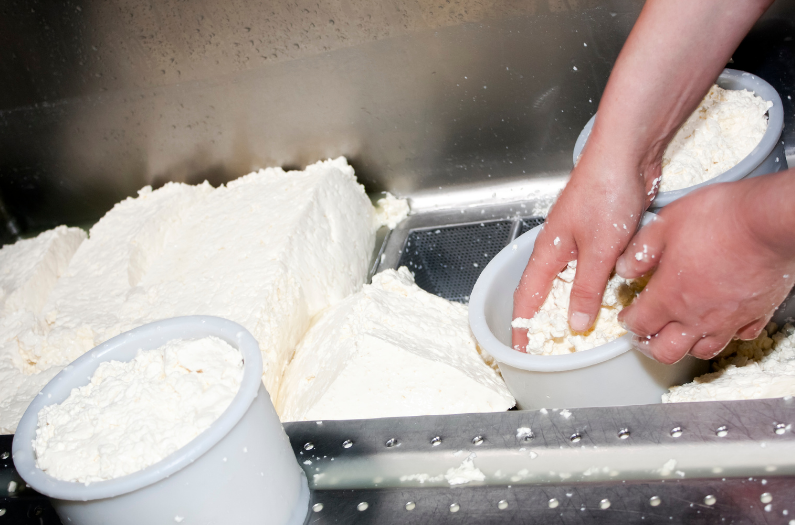Share this page
Dehydration of dairy products
Dehydration is an important operation used by many dairy processors to extend the shelf life of milk and dairy products.


Many dairy processors use dehydration as a tool to extend the shelf life of perishable streams.
Dehydration inhibits growth of bacteria, yeast and moulds through the removal of water. Modern technologies allow for the manufacture of milk powders with high nutritional value. Key technologies used by the dairy sector within the dehydration process include:
- Falling film vacuum evaporation
- Reverse osmosis filtration
- Spray drying
- Turbine thin layer dehydration
- Microwave vacuum dehydration technologies
Dehydration is generally performed in two stages to reduce energy usage. Initially, the bulk water is removed through a relatively low-energy unit operation. Falling film vacuum evaporation is the most commonly applied technology for bulk water removal.
The stream to be concentrated is distributed into thin films under vacuum which increases heat transfer and allows water to evaporate at temperatures < 70˚C, thereby limiting heat damage in the product.
Reverse Osmosis filtration may also be used to physically separate bulk water using semi-permeable membranes.
- Technologies for primary removal of water are limited in the amount of water they can remove; reverse osmosis and falling film evaporators cannot typically operate beyond ~25% and 50-60% dry matter, respectively.
- The final stage of water removal is most commonly achieved through spray drying, which is energy intensive due to the requirement to heat large quantities of air to high temperatures, typically between 170 and 200 ˚C.
- Milk is sprayed, or atomised, into the hot air which removes water from the droplets, forming a powder which falls to the bottom of the drying chamber for collection. Due to the cooling affect associated with the evaporation of water, powder temperature generally remains <70 ˚C which limits heat damage to powders.
Recent developments in dehydration of dairy products also include turbine thin layer dehydration and microwave vacuum dehydration technologies.
Dehydration processes used to extend dairy shelf life & reduce waste
Falling film vacuum evaporation
Falling-film evaporators are commonly used for milk powder production.
Reverse osmosis filtration
The application of reverse osmosis to concentrate milk before evaporation lowers total energy consumption.
Spray drying
Spray drying is one of the most commonly used techniques for producing milk powders and for stabilising milk constituents.
Turbine thin layer dehydration
A layer of concentrated milk is put in direct contact with the hot surface of rotating rollers or drums. As the drum rotates and is heated on the inside, the product dries on the outside of the drum surface.
Microwave vacuum dehydration technologies
A dehydration technology which uses a combination of low pressure and microwave energy to deliver a high-speed, controllable, low-temperature, efficient drying process.
Learn more about dairy science & technology
The breadth of issues IDF covers in its work is extensive. Find out more about the work we do.
Fermented dairy products
Fermentation is a natural way to keep foods fresh and safe throughout shelf life.
Read MoreTechnology behind cheese making
To make cheese, milk is fermented and concentrated by removal of water through the coagulation of th...
Read MoreThe milk tree – technology and use
The dairy sector processes raw milk into an array of products and by-products, which have a range of...
Read MoreDairy focused Membrane Processing
Physically separating and selectively concentrating milk components.
Read MoreRelated reports & publications
IDF provides a permanent source of authoritative scientific and other information on a whole range of topics relevant to the dairy sector.
Bulletin of the IDF N° 496/2019: The technology of pasteurisation and its effect on the microbiolog...
Pasteurisation of milk involves heating the milk to at least 72°C for 15 s or to 63°C for 30 min. Such heat....
Bulletin of the IDF N° 267/1991 - IDF recommendations for the hygienic manufacture of spray-dried m...
by IDF Group of Experts B39 - Spray drying of milk These recommendations specific to spray-dried milk powders....
Related news & insights
IDF provides a permanent source of authoritative scientific and other information on a whole range of topics relevant to the dairy sector.














